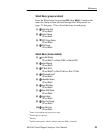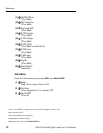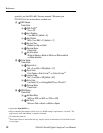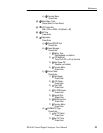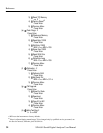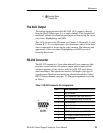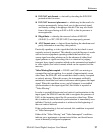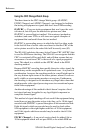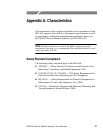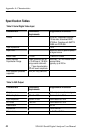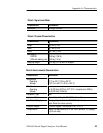
Reference
SDA 601 Serial Digital Analyzer User Manual
37
H EAV/SAV mis-format — derived by decoding the EAV/SAV
protection bits for errors.
H EAV/SAV incorrect placement — which may be the result of a
receiver momentarily losing clock sync to the received signal,
and thereby adding or dropping a data bit. This may also result
from a bit error altering an EAV or SAV so that its presence is
unrecognizable.
H Illegal data — whereby the reserved values of 000-003
(00.0-00.3) or 3FC-3FF (FF.0-FF.3) are improperly present.
H ANC format error — derived from checking the checksum and
parity information in ancillary data packets.
Practically speaking, a video signal that fails the last check is most
certainly seriously impaired. This check is provided because it works
with in-service equipment operating without the benefit of any
source signal encoding whatsoever. In the absence of either fixed
signal patterns or signal encoding, this is a criterion for judging
transport layer signal corruption which can be automated and applied
to video signals (and video content) which can be expected in com-
mon use.
Video Missing/Interrupted — If EAVs and SAVs are missing or
corrupted beyond recognition, for a period of approximately seven
video lines, the SDA 601 will assume that video is utterly corrupted
or entirely missing. When this occurs, the instrument artificially
maintains a horizontal and vertical reference which ignores the input
signal. When this condition occurs, and all attempts to reestablish
synchronization to the input signal fail, this failure is reported as
“Video Missing.”
In order to reestablish horizontal and vertical synchronization to the
input signal, the SDA 601 must be able to recognize the presence of
EAVs in the incoming signal for 64 consecutive video lines. When
this is achieved, then horizontal synchronization is immediately rees-
tablished. Vertical synchronization is achieved at the beginning of
the next vertical interval.
If the synchronization is lost and restored, this condition is reported
as “Video Interrupted.”
Either of the “Video Missing” and “Video Interrupted” conditions
indicate gross equipment or transmission failure, and should never
occur in normally configured equipment.



